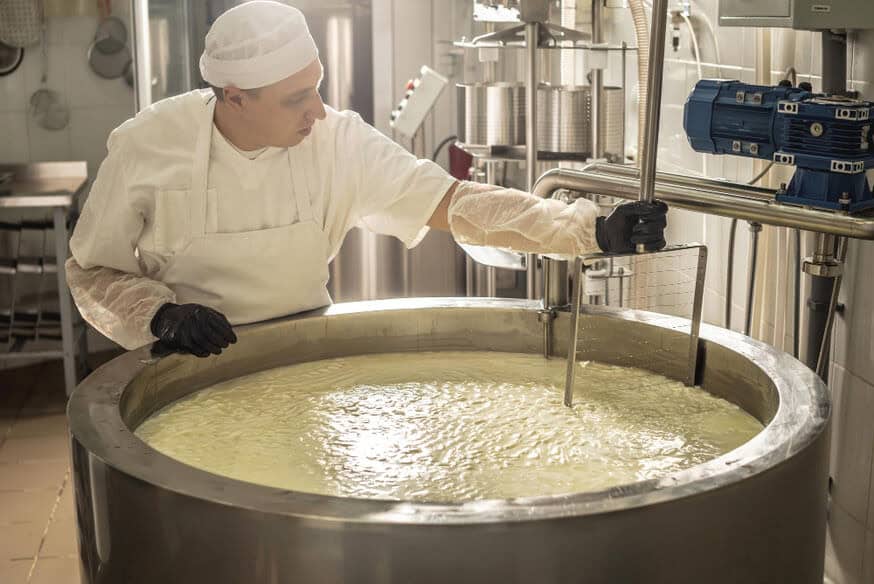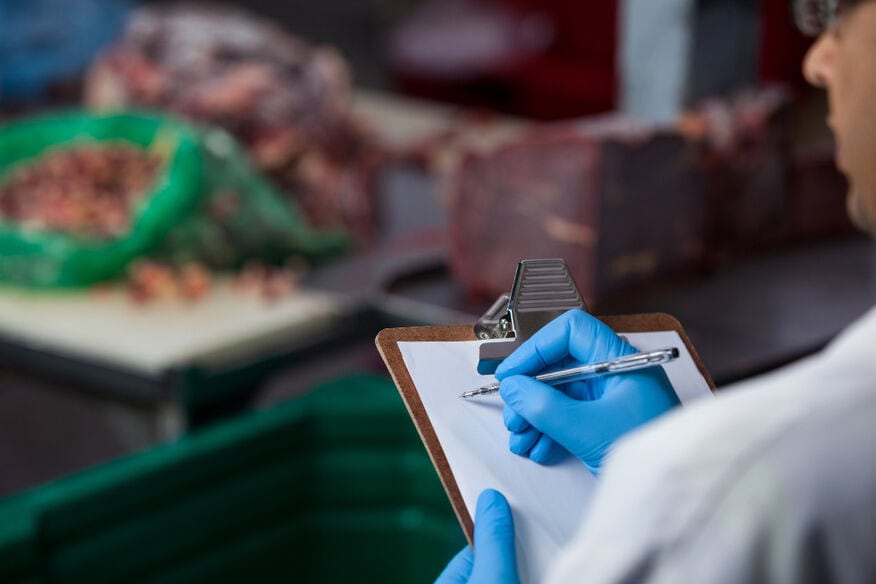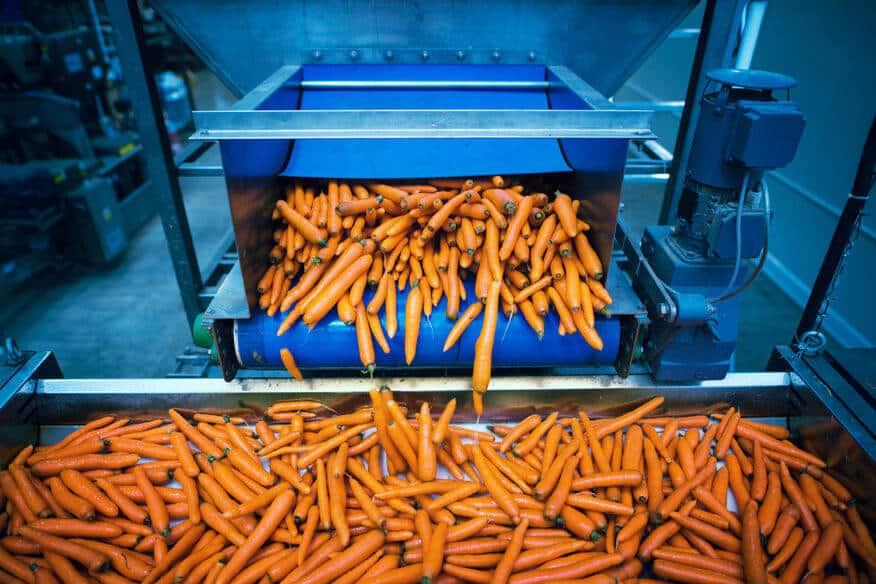If you’re running a food manufacturing or food production business, you know equipment failure isn’t just an inconvenience—it’s a catastrophe. Downtime in the food industry quickly means spoiled products, missed deadlines, compliance violations, and serious safety risks to staff and customers.
Just one hour of unplanned downtime can cost your food manufacturing business thousands in lost production (not to mention what it can do to your reputation). Proactive maintenance is essential. If you want to keep your food production safe, efficient, and fully compliant with industry standards, explore these food manufacturing equipment maintenance must-haves for best practices in operational efficiency.
Must-Have #1: Preventive Maintenance Plans

In a production kitchen, you and your team rarely have the luxury of ignoring something until it breaks. Preventive maintenance is crucial for servicing your equipment long before you’re in dire straits.
Reactive maintenance, on the other hand, is what you do AFTER the problem. While you can rely on Reliable Water Services for the reactive, emergency maintenance on your commercial water heating equipment (with a 24/7 response), here are some items that should have preventive maintenance as well.
- Boilers
- Mixers and Food Processors
- Conveyors
- Heating Equipment
- Pumps and Valves
- Packaging Systems
That’s a lot of important equipment, and by no means a comprehensive list. Production lines run lean, and you likely need every piece of equipment in your food processing operation to be in tip-top working order.
It’s crucial to commit to routine inspections and regular servicing. You’ll significantly cut the risk of costly downtime and improve the efficiency of your equipment. What’s more, regular maintenance extends the lifespan of your equipment and minimizes emergency repair costs when an urgent issue does arise.
While the direct costs of downtime are well known, deferred maintenance often leads to more subtle (but costly) issues. Worn components can strain other systems, causing energy inefficiencies that drive up utility bills.
Another way of preventing downtime from unexpected equipment failures is by having redundancy (backups) built into your system. For example, instead of having one giant water heater to handle your facility’s needs, we often recommend installing two smaller water heaters instead. That way, they can work together to still generate the same gallons per hour of hot water as one larger water heater, with the added bonus that if one heater goes down, you won’t be totally at a standstill. That second water heater can still keep you running until the other is fixed.
Must-Have #2: Sanitation and Safety Protocols
In the food production industry, food safety is quite literally everything for your business. It’s hard to overstate how critical it is never to compromise food safety and to keep the strictest sanitation standards in mind.
This safety includes using Clean-in-Place (CIP) equipment when possible. Many pieces of kitchen equipment are labeled “CIP-compatible” or “CIP-ready,” which means there are built-in features like spray devices, valves, and easy-to-sanitize surfaces that allow the equipment to clean itself automatically.
It’s important to integrate equipment maintenance with sanitation cycles. If you’re cleaning heat exchangers, tanks, or piping, you want to avoid any risk of food contamination. Some of the cleaning and safety measures can be carried out at the same time as service.
Ultimately, following the FDA and USDA requirements is the most important guideline. Should you have an inspection or face an issue with your production line, you’ll be glad that you took the necessary measures to avoid the risk of contamination.
Regulatory compliance isn’t just a checkbox but a critical pillar of your operational integrity and quality control. A lapsed inspection, missed cleaning cycle, or overlooked equipment issue could result in fines, shutdowns, and even recalls. By treating sanitation and safety as part of your routine maintenance program, you protect customers and safeguard your company’s standing with the FDA, USDA, and local health departments.
Creating overlapping schedules—where equipment maintenance and sanitation protocols reinforce one another—is the best way to lead to consistent compliance and fewer surprises during inspections.
Must-Have #3: Staff Training & Documentation

Another must-have “tool”? A well-trained staff. In many ways, your staff is your first line of defense. Anyone who works on your line should be trained to catch issues early and report anything of concern.
A well-trained team can catch problems long before supervising staff or maintenance might. Be sure your team knows what to listen and look for. Even the most advanced equipment can be subject to human failure. Staff should know how to operate and maintain any piece they work with. They must know proper startup and shutdown procedures, too.
It’s also vital that your team keeps proper maintenance logs, SOPs (Standard Operating Procedures), and compliance documentation. In case of an audit or inspection, your maintenance logs are your protection. By logging everything in real-time and staying up-to-date, your staff will show that your company has been doing due diligence with regular check-ups for safety and cleanliness.
It’s a good idea to foster a culture of shared accountability; this can have a lasting impact on equipment maintenance and food safety. Encourage your staff at all levels to take ownership of their stations and feel empowered to speak up when something seems off. Consider introducing a simple reward system for spotting potential issues early or maintaining clean and organized workspaces. When employees understand that their actions directly impact product quality and facility safety, they’re more likely to stay engaged and hold high standards in their day-to-day work.
Must-Have #4: Monitoring & Smart Technology
Smart technology has changed the game in so many areas of industry, including food production. Many lines and pieces of production equipment now have alert systems, sensors, and even remote monitoring, so you’re the first to know when a concern exists.
Smart technology helps you predict failures long before they happen. They may flag issues like pressure levels, speed, system performance, and more. These tools can pinpoint issues quickly so you don’t lose inventory and valuable production time with testing and troubleshooting.
The added benefit is that many smart systems and monitoring tools also support better energy efficiency. Not only can you reduce your facility’s environmental footprint, but you can save on the costs of utilities and operations. That makes these tech advances a win-win for sustainability and your bottom line.
Must-Have #5: Partnering with the Right Service Provider

Your service partners are crucial for your business as well. Even if you have on-site maintenance, you likely need outside expertise to carry out some of the specialized jobs and maintenance. What should you look for in a service provider? Reliable, responsive service that’s available when you need it.
Many pieces of equipment on your line are critical. Your commercial water heaters, boilers, and filtration systems are especially important. Reliable Water Services offers 24/7 emergency support to help you keep your production up and running should something go awry.
Select a provider that is familiar with your industry and equipment. They should understand the needs of food service and production and the importance of cleanliness and compliance. Planned service contracts help you keep up with the maintenance on a regular schedule.
At Reliable Water Services, we specialize in servicing critical equipment for food and beverage manufacturers. Thanks to our years of experience in the industry, we understand exactly what is at stake. We show up with the right spare parts for your equipment to help you get your production schedules back on track.
All food processing operations are a little different. From small batch operations in the boutique food market to high-output manufacturers in the beverage industry, your preventive maintenance program may vary widely depending on your food processing equipment, layout, production volume, and facility age. That’s why it’s important to work with service providers who don’t just offer a one-size-fits-all approach.
The Cost of Skipping Maintenance
Like going to the dentist twice a year or getting the oil changed in your car, preventive maintenance is no one’s favorite activity. But sticking to a schedule, training staff, prioritizing maintenance, and using the modern tools at your disposal are important ways to protect your business and avoid costly repairs.
When you overlook maintenance, you risk food safety violations, expensive equipment repair, and the dreaded unexpected downtime. Ultimately, these all hurt your bottom line and your output, but they can also do untold damage to your reputation.
In such a competitive industry, a late shipment or, worse, a recalled product, can put you in a bad position. It’s far better to take care of these maintenance musts now before they escalate. Well-maintained equipment can help you meet the unique challenges of the food manufacturing industry. Prioritizing that maintenance is a critical factor in the lifespan of your equipment.
The right strategy isn’t just about avoiding disaster—it’s about protecting your investment, your product, and your customers. A lot is riding on your operations. If you are unsure about the maintenance or state of any of your commercial water heating equipment, reach out.
Reliable Water Services is here to help your food production business stay on top. Explore our leasing options and service plans to find one that’s right for you.